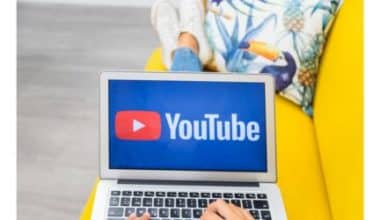Let’s be realistic! In the world today, creating promotional content that genuinely connects with your audience and brings in results for your brand is an art. Building trust, establishing connections, and engaging are more important than just selling. Regardless of your experience in marketing or content creation, understanding the details of effective promotional content is crucial. In this article, I’ll be sharing my expertise from years of experience in the field, on how to create promotional content that drives results for your brand alongside my personal encounter and professional advice to help you measure up appropriately.
Key Points
- Building trust, establishing connections, and engaging the audience are crucial aspects of effective promotional content. This type of content aims to promote a product, service, or brand through various formats
- Promotional content directly promotes a product, service, or brand to drive sales or increase brand awareness, while non-promotional content focuses on educating, entertaining, or informing the audience without direct promotion.
- Effective promotional content can promote sales by guiding potential customers through awareness, consideration, and decision stages.
- Researching demographics, interests, and pain points helps tailor the message to address the audience’s needs and preferences, ultimately leading to higher engagement and conversions.
What is Promotional Content?
Let’s start with the basics of developing promotional content before getting into the specifics. What are promotional contents? Promotional content is any material created to promote a product, service, or brand. The following can be newsletters sent by email, blogs, videos, social media posts, ads, and more. Getting people to do something, whether buying something, subscribing to a newsletter, or going to an event, is the main objective of promotional content.
In today’s environment, promotional content is essential to any firm. It enables companies to establish more meaningful connections and interactions with their target market for their products and services. Through the use of a variety of content formats, including podcasts, infographics, videos, and blog posts, businesses may develop enduring relationships with their clientele and establish their trustworthiness.
Envision yourself in the position of someone looking for a piece of extra information on specific products or services to be offered. You find a website that not only has the data you require but also delivers it in an eye-catching and easy way. This is how promotional content can be powerful. It creates and inspires in addition to educating and informing. It establishes a bond between the audience and the brand, encouraging fidelity and trust by attracting more varieties of clients or customers through one form of promotional content and the other.
Benefits of Promotional Content

#1. Promote Sales
People become aware of their problems before they make a purchase (awareness). They take the time to investigate and have a deeper comprehension of their issue (consideration). After that, they decide which course of action is best for them(decision). A well-designed promotional material system informs potential customers about what they’re looking for, which benefits them during all three of these phases.
- Awareness stages
- Consideration stages
- Decision stages
This phase moves potential buyers one step closer to completing a transaction establishing a connection with the target market to increase the likelihood that they will choose to do business with you over competitors.
#2. Brand Awareness and Identity
I recall a time when my cousin was working with a local bakery as the Content marketer. Their website was lovely, but they weren’t exactly a household name. Enter a series of quirky recipe videos featuring their head baker. Social media went wild, and within weeks, lines were out the door. Promotional content puts them on the map and lets millions of audiences know what you offer distinctly and also gives you leverage on that offer and services over any other company.
#3. Build Trust
People are skeptical they don’t want to be sold to; they want to be informed and engaged. That’s where content that educates and entertains comes in. For an eco-friendly cleaning product company, my colleague created blog posts on DIY cleaning solutions – using their products, and yes! Sales went high, but more importantly, customers saw the brand as a helpful resource, not just a seller.
#4. Customer Engagement

A one-sided diatribe is not appropriate for content. It ought to start a discussion. I remember a pet care app my client launched. We started a social media campaign that featured endearing pet photos with hilarious commentary created by users. Customer loyalty was fostered as a result of the explosive increase in engagement and sense of community.
#5. SEO Recognition
New, excellent material is highly valued by search engines. Through the smart integration of appropriate keyword phrases into your promotional content, you raise the search engine exposure of your website. I authored blog entries for a law company covering frequently asked legal topics. Their organic traffic skyrocketed, and they attracted new customers looking for those same subjects.
#6. Cost-Effective Content
Promotional material provides an excellent return on investment when compared to traditional advertising. For years to come, the content you create for your website and social media accounts can draw in new clients on their own.
#7. Measurable Marketing
The days of throwing promotional materials with no interest at walls are over. You may monitor important data like website traffic, engagement, and conversions using promotional content. This enables you to assess what is effective and modify your approach for ongoing success. if you have noticed any workout brand, you would realize that after the content campaign, we noticed a significant increase in traffic from people searching for fitness tips – that’s the target audience!
Download our FREE TEMPLATE to guide you on how to Easily Create Promotional Content
Tips on How to Design Compelling Promotional Content
Creating promotional content that drives results requires a blend of creativity, strategy, and empathy. Here are some tried-and-true tips to get you started.
#1. Know Your Audience

Knowing your audience is one of the most important components of good advertising content. If you don’t know your audience, it’s impossible to produce content that will resonate. Spend time researching your audience’s demographics, interests, pain points, and preferences. Use tools like Google Analytics, social media insights, and customer surveys to gather data.
I can still clearly recall my initial days of employment at a tiny computer business. Our early attempts at promoting a new app were unsuccessful. After diving into audience research, we discovered that our target audience was much younger than we initially thought. They preferred short, snappy videos over lengthy blog posts. Once we adjusted our strategy, engagement soared, and our downloads doubled in just a few months.
#2. Craft a Compelling Message
Your promotional content needs to deliver a message that is both captivating and obvious. This message should address the issues that your audience is facing and emphasize the special advantages of your good or service. Make sure your audience understands the value you’re providing and why it matters.
#3. Establish a Bond with Emotion
Emotions influence people’s decisions, thus your marketing material should appeal to those feelings. Whether it’s joy, anxiety, excitement, or nostalgia, employing emotion skillfully can enhance the persuasiveness and engagement of your material.
#4. Optimize for Different Platforms
Different platforms require different approaches. A LinkedIn post, an Instagram story, and a Facebook advertisement must all be customized for the audience and structure of each respective site. Make sure your promotional content is optimized for each platform to maximize its effectiveness.
In one campaign, my team created a series of videos to promote a new fitness product. On Instagram, short videos were used, visually appealing clips with catchy music and quick tips. On LinkedIn, longer clips were shared, and more detailed videos focusing on the science behind the product. By tailoring our content to each platform, we were able to reach a wider audience and achieve better results.
#5. Evaluate and Rework
Lastly, be ready to test and refine your promotional material at all times. It’s important to regularly assess your outcomes and modify your approach as necessary because what works today might not work tomorrow. To determine what appeals to your audience the most, and make data-driven choices.
Strategies to Build Reliable Promotional Content with Examples
To create promotional content that truly stands out, you need to think outside the box. Here are some innovative strategies that have worked for me and could work for you too.
#1. Leverage User-Generated Content
User-generated content (UGC) is a powerful tool for building trust and authenticity. Encourage your customers to share their experiences with your product or service and feature their content in your promotional materials.
Imagine promoting a skincare line, first, you will need to launch a hashtag campaign encouraging customers to share their before-and-after photos and anyone with the highest number of likes or engagement wins a special package or be featured in the next post with the brand. The response will overwhelming, and able to use this authentic content in such ads and social media posts. The campaign will not only increase engagement but also build trust with potential customers.
#2. Partnership with Influencers
Influencer marketing can be incredibly effective when done right. Partnering with influencers who align with your brand can help you reach new audiences and build credibility.
Talking about the new fitness app I mentioned earlier, a brand can partner with fitness influencers who have a loyal following. Their genuine endorsements and creative content can help reach a broader audience and significantly increase app downloads.
#3. Utilize Interactive Content
Interactive content, such as quizzes, polls, and interactive videos, can engage your audience in a way that static content can’t. It encourages participation and can provide valuable insights into your audience’s preferences.
Imagine creating a fun quiz that matched users with their ideal vacation destination in a travel agency campaign. The quiz will be a hit, driving traffic to such company websites and increasing inquiries about the available travel packages. The interactive nature of the quiz kept users engaged and excited about the offerings.
#4. Captivating Storytelling
Using visual storytelling to express your story effectively and fast is quite effective. Use high-quality images, videos, and infographics to capture your audience’s attention and communicate your value proposition.
For example, a business might produce several visually spectacular films highlighting the properties and their distinctive qualities to promote a luxury real estate project. The content’s eye-catching visuals have the potential to draw in more viewers and result in a sharp rise in inquiries and sales.
#5. Implement Retargeting Campaigns

Retargeting is a very powerful tactic to increase conversions and keep your brand in front of potential customers. You may remind customers about your services and motivate them to take action by focusing on people who have already interacted with your business. In a campaign for an e-commerce store, showing the audience personalized ads featuring the products they had viewed, can increase conversion rate.
What is Promotional Content?
Promotional content is a type of marketing material that aims to draw viewers in, increase brand recognition, and eventually persuade them to take a desired action, like making a purchase, signing up, or visiting. It’s more than simply a sales pitch; it’s educational, and interesting, and frequently uses storytelling to emotionally connect with the target audience.
Here are some examples of promotional content:
- A “5 Tips to Improve Your Photography Skills” blog post that obliquely advertises a new camera app.
- An infographic showcasing a particular brand of environmentally friendly cleaning products on “The Benefits of Using a Green Cleaning Solution”
- A customer testimonial video featuring a happy client raving about a new fitness program.
- A social media quiz that helps users identify their skincare needs and then recommends a relevant product line.
What is a Promotional Content and Non Promotional Content?
Promotional content is created to promote a product, service, event, or brand to drive sales, generate leads, or increase brand awareness.
Non-promotional content serves other purposes such as educating, entertaining, or informing the audience without directly promoting a specific product or brand.
For example, a blog post explaining the benefits of a healthy lifestyle is non-promotional content. On the other hand, a blog post highlighting the benefits of your brand’s new health supplement and encouraging readers to buy it is promotional content. Both types of content are crucial for a well-rounded marketing strategy, but they serve different purposes.
What is Another Word for Promotional Content?
Ultimately, the best alternative depends on the specific context and the aspect of promotional content you want to emphasize.
- Brand Content
- Engaging content
- Lead generation content
- Content marketing
- Brand awareness content
- Educational content
The best term to use depends on the specific context and the aspect you want to emphasize. For instance, if you’re focusing on building brand loyalty and emotional connection, “brand storytelling” might be a good choice. If your primary goal is generating leads, then “lead generation content” would be more appropriate.
Conclusion
We need to understand that promotional content, at its core, is about building relationships with your audience. It’s about sparking conversations, offering value, and establishing yourself as a trusted advisor. When you approach content creation with this mindset, the results will speak for themselves. Creating promotional content that drives results is both an art and a science that requires a deep understanding of your audience, a compelling message, and a willingness to experiment and adapt. By leveraging innovative strategies like user-generated content, influencer collaborations, and interactive content, you can create promotional materials that stand out and drive real results for your brand.
So, how will you harness the power of promotional content to achieve your marketing goals? What are some of your biggest challenges when it comes to creating promotional content? Share your thoughts in the comments below!
Related Articles
- How to Protect Your Brand Online & Offline (Expert Tips)
- What is PR Measurement: How Experts Prove Effectiveness
- 11 Insane Brand Tracking Tools Will Blow Your Company’s Profits
- The Power of Brand Monitoring Software: Unlocking Consumer Insights






